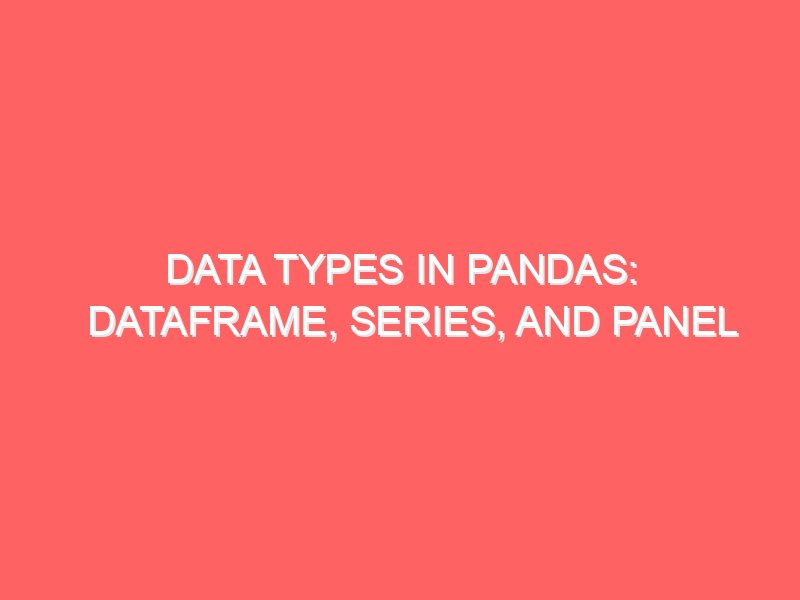Setting Up Your Environment for Pandas
Get Ready to dive into the world of data analysis with Pandas? Before we start manipulating data like pros, we need to set up our environment properly. This guide will walk you through the entire process, step-by-step, ensuring you’re all set to harness the power of Pandas. Let’s get started! Why Pandas? First, a quick recap. Pandas is an essential tool for data analysis in Python, offering powerful, flexible data structures for data manipulation and analysis. Whether you’re dealing with spreadsheets, databases, or even time-series data, Pandas makes it all easier. Step 1: Installing Python If you haven’t installed Python yet, that’s our first step. Pandas is a Python library, so we need Python up and running on your machine. Installing Python Verify Installation After installation, open a command prompt (Windows) or terminal (Mac/Linux) and type: You should see the version of Python you installed. If it’s displayed, you’re good to go! Step 2: Setting Up a Virtual Environment Using a virtual environment is a best practice in Python. It keeps your projects isolated, ensuring that dependencies for one project don’t interfere with another. Creating a Virtual Environment Replace myenv with the name of your virtual environment. Activating the Virtual Environment You’ll know your environment is active when you see the name of your environment in parentheses at the beginning of your command line. Step 3: Installing Pandas With your virtual environment set up, installing Pandas is a breeze. Using pip Pip is the package installer for Python. To install Pandas, simply type: Verify Installation To verify that Pandas is installed correctly, open a Python shell by typing python in your command prompt or terminal and then type: You should see the version of Pandas that was installed. Step 4: Installing Additional Packages Pandas is powerful on its own, but often you’ll need other libraries for tasks like numerical computations, data visualization, or working with various data formats. Commonly Used Packages Step 5: Setting Up Jupyter Notebook Jupyter Notebook is an excellent tool for data analysis and visualization. It allows you to create and share documents that contain live code, equations, visualizations, and narrative text. Starting Jupyter Notebook To start Jupyter Notebook, simply type: Your default web browser will open a new tab showing the Jupyter Notebook interface. From here, you can create new notebooks and start coding. Creating a New Notebook Step 6: Your First Pandas Code Let’s write some basic Pandas code to ensure everything is set up correctly. Reading Data Create a CSV file named data.csv with the following content: In your Jupyter Notebook, type the following code to read this CSV file: You should see your data displayed in a tabular format. Basic Operations Now, let’s perform a few basic operations: Conclusion Congratulations! You’ve successfully set up your environment for using Pandas. With Python, Pandas, and Jupyter Notebook installed, you’re now ready to dive into data analysis. Remember, the key to mastering Pandas (or any tool) is practice. Start exploring datasets, experimenting with different functions, and soon you’ll be manipulating data like If you found this guide helpful, don’t forget to check out our other articles Pandas, Python, Data Analysis, Data Science, Environment Setup, Jupyter Notebook, Virtual Environment, Data Manipulation, Python Tutorial
Setting Up Your Environment for Pandas Read More »










